Game Design
I have helped design and develop several games for different purposes such as learning, behavioral shift, cultural awareness and entertainment. This has allowed me to investigate how game design is affected by the intended audience.
The Road to AI Literacy Education: From Pedagogical Needs to Tangible Game Design
Marvin Zammit, Iro Voulgari, Antonios Liapis and Georgios N. Yannakakis

The mini-game in ArtBot that exposes reinforcement learning parameters and reward systems to students.
Abstract: The advancement of artificial intelligence (AI) and its increased use in everyday life have exacerbated the need to understand its underlying processes, and to raise awareness about its shortcomings and faults. Consequently there has been an increased effort to teach basic concepts of AI and machine learning (ML) from an early age. Digital games have been shown to be effective as teaching and learning tools, and there are ongoing efforts to increase AI literacy through educational digital games. To this effect, this work describes the process followed to extrapolate the design of such an educational game directly from the pedagogical needs emerging from stakeholders. Seven focus groups and workshops were conducted in Greece, Malta and Norway, with 55 teachers, researchers, practitioners and policy-makers, and 22 primary and secondary education students in total. These workshops identified seven goals which informed the design of a game for AI literacy called ArtBot. The game design process and the final interface and gameplay loop of ArtBot are explained in relation to these goals. The game was subsequently deployed across a variety of platforms, to enable dissemination to a broad audience in classrooms and elsewhere. The game was part of the tools developed in the framework of the LearnML Erasmus+ project. A preliminary online survey was used to gauge how well the game was received by teachers and students, with an overall positive result. A longer-term data collection of the game usage statistics has been initiated and will be analysed over the course of the game dissemination.
in Proceedings of the European Conference on Games Based Learning, 2021. BibTex
A Participatory Approach to Redesigning Games for Educational Purposes
Stamatia Savvani and Antonios Liapis
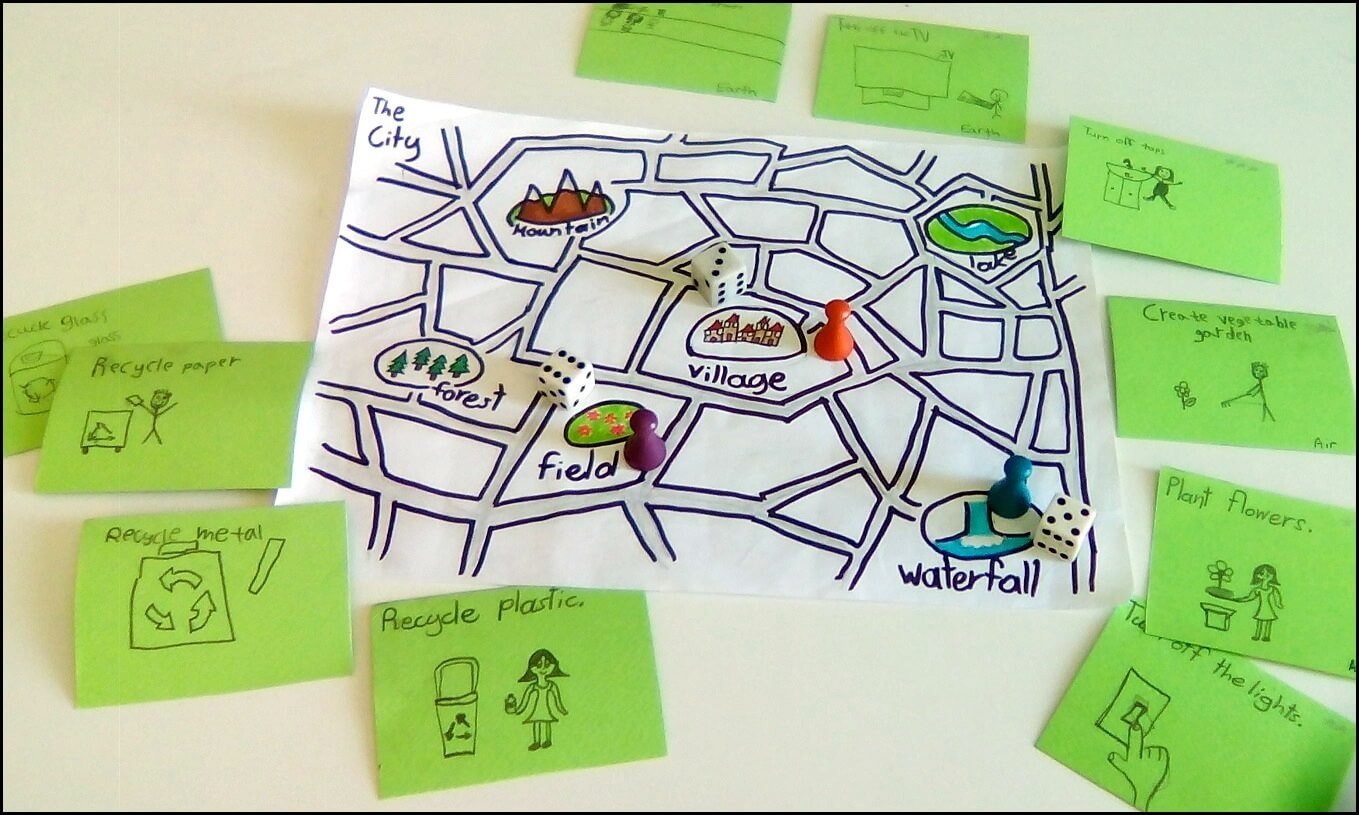
A redesigned version of Pandemic, made for (and by) an English Language class.
Abstract: Even though games designed for educational purposes can be motivating, they usually shelter dated pedagogies, passive learning procedures, and often overlook learners' creativity. In an effort to reinforce the active participation of learners in games, this paper presents a participatory process in which students and teachers are involved in game design. The proposed process concerns redesigning existing commercial games into educational ones and includes establishing the learning goals, identifying appropriate commercial games, adapting the rules and context, crafting and playtesting the game. Using language learning as one application of this process, the paper presents how three well-known tabletop games were redesigned in a foreign language classroom with elementary and intermediate English language learners. The benefits that underlie the process concern students' active participation, boosting their problem-solving skills, and engaging them in creative learning.
in Proceedings of the 8th International Games and Learning Alliance Conference. Springer 2019. BibTex
The Newborn World: Guiding Creativity in a Competitive Storytelling Game
Antonios Liapis

The second player chooses which word cards (bottom) to combine with the event text (top) in order to form their proposed continuation of the story.
Abstract: This paper presents The Newborn World, a co-located multiplayer game for mobile devices with a focus on storytelling. The game has been designed following patterns of analog games that prompt players to tell stories, and uses digital representations of cards and tokens for interaction. The collaborative nature of storytelling is interspersed with competitive elements such as hidden goals and secret voting for best story. The paper exposes several design decisions for balancing goal-oriented and freeform play, competition and collaboration, as well as elements that constrain or foster players' creativity.
in Proceedings of the IEEE Conference on Games, 2019. BibTex
Deciphering Generated Symbols as a Game Mechanic: The Design of Alien Transmission
Antonios Liapis
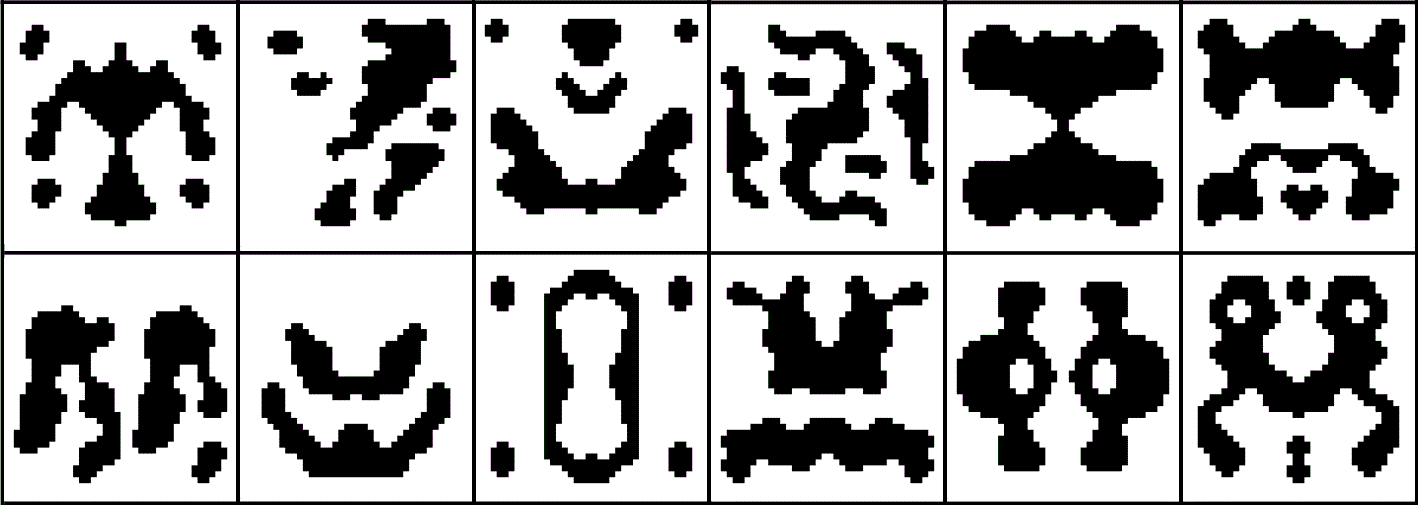
Generated symbols used as cards by the lookout player in the Alien Transmission boardgame, in order to communicate threats and counter-actions to teammates.
Abstract: This article describes the gameplay and the design rationale of the Alien Transmission game, where generated symbols are used as a form of communication between players in a co-operative board game. The symbols are abstract black-and-white blobs, generated by the computer via cellular automata, but players must use these symbols to convey information regarding upcoming threats. As gameplay progresses, symbols gain a meaning due to their visual associations and past gameplay experiences. The work highlights how procedural content generation can be elevated into a mechanic rather than used to randomize the initial game state.
in Seeds: The Procjam Zine 3. 2018. BibTex
Real-world Data as a Seed
Antonios Liapis
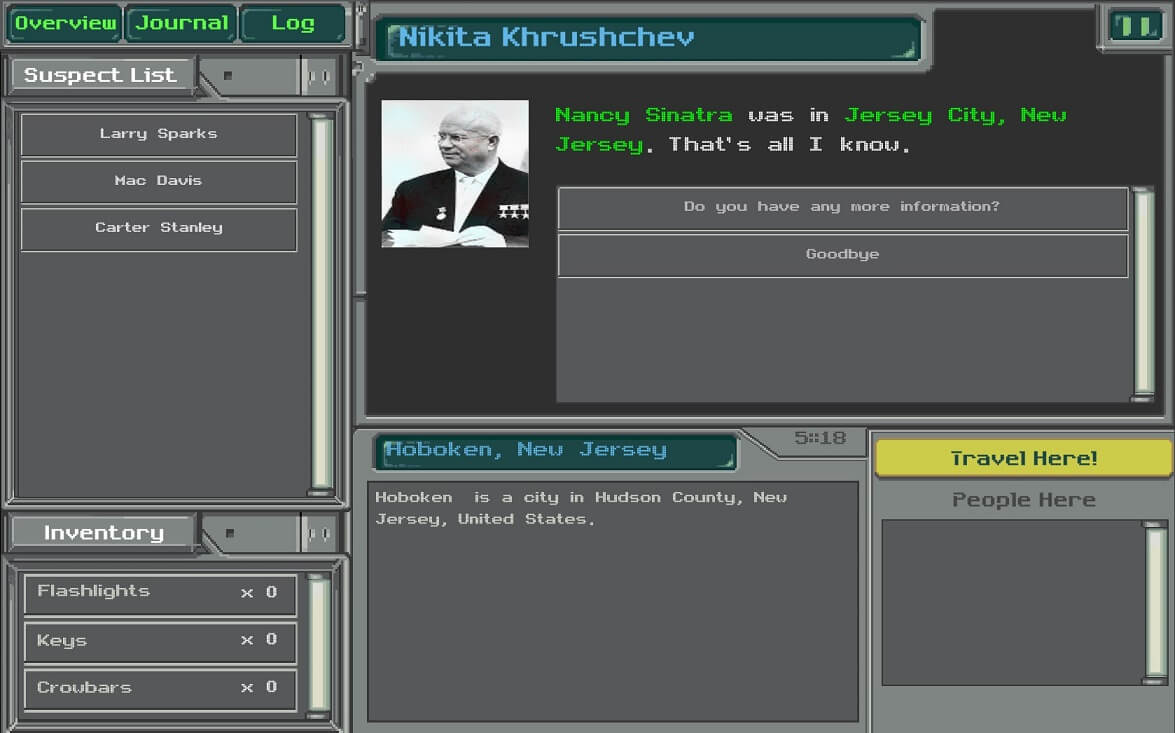
Screenshot of the DATA Agent game, where a player tries to identify the location of a murder suspect.
Abstract: This article proposes the use of real-world data for game generation, and describes the design priorities of DATA Agent as an example of data-driven game generation. Due to the use (and transformation) of real-world data, DATA Agent weaves a narrative of a time-travelling doppelganger murderer and a time-traveling detective intent on catching the murder in a lie about its presumed identity. DATA Agent shows how real-world data from Wikipedia, Wikimedia Commons and OpenStreetMap can be transformed into NPCs, levels, plot points and exposition dialog.
in Seeds: The Procjam Zine 3. 2018. BibTex
Capturing the Virtual Movement of Paintings: A Game and A Tool
Kalliopi Kontiza, Antonios Liapis and Joseph Padfield

Screenshot of the virtual gallery creation game, where players add paintings to a virtual wall and create their personalized walls.
Abstract: This paper presents a virtual gallery creation game that has been designed for the National Gallery of London, as part of the CrossCult project, with a multi-purpose goal. For visitors, the game allows users to virtually move paintings around, reflecting on their visit through gamification, while creating and curating their own virtual galleries. For National Gallery staff, the application allows them to simply visualise planned exhibitions and to accurately record the positions of paintings when they are moved or re-positioned. This paper describes the game's underlying structure, designed to serve both as an expert tool and as a game, and discusses the results obtained from initial experiments with end-users. Some preliminary conclusions can be drawn regarding the extent to which the application allows the end users to reflect on the National Gallery collection while creating and curating their own virtual galleries.
in Proceedings of the Digital Heritage International Congress (DigitalHeritage), 2018. BibTex
Board Game Prototyping to Co-Design a Better Location-Based Digital Game
Catherine Emma Jones, Antonios Liapis, Ioanna Lykourentzou and Daniele Guido
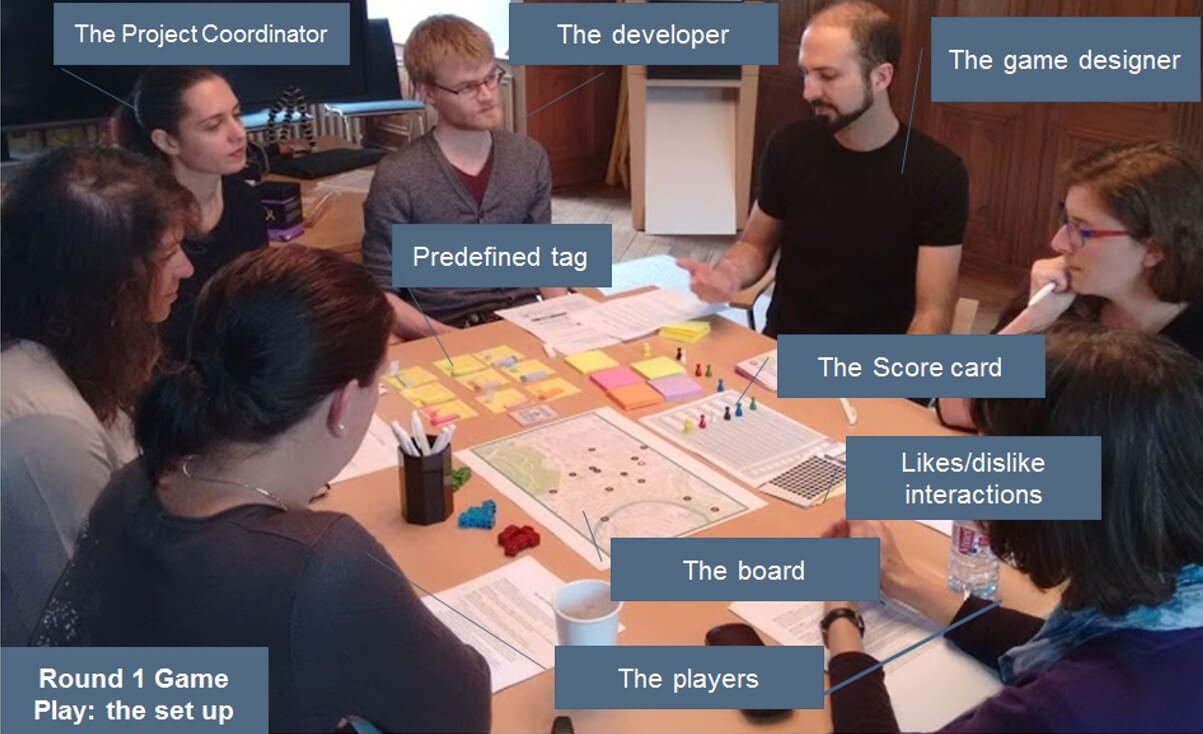
first play test of a board game prototype that partially simulated interactions within a location-based digital game.
Abstract: In this case study we describe the iterative process of paper prototyping, using a board game, to co-design a location-based mobile application. The end goal of the application is to motivate reflection on historical topics about migration. The board game serves to capture the core concerns of this application by simulating movement through the city. Three play tests highlighted the users' interest and issues with the historical content, the way this content is represented, and the players' responses to the interactions and motivating mechanisms of the application. Results show that the board game helped capture important design preferences and problems, ensuring the improvement of our scenario. This feedback can help reduce development effort and implement a future technology prototype closer to the needs of our end users.
In Proceedings of the CHI Conference Extended Abstracts on Human Factors in Computing Systems, 2017. BibTex
Mixed-initiative Creative Drawing with webIconoscope
Antonios Liapis
Example icons created by webIconoscope, seen through the voting gallery which allows users to guess which concept (of three) each icon represents, as well as rate its general appeal.
Abstract: This paper presents the webIcononscope tool for creative drawing, which allows users to draw simple icons composed of basic shapes and colors in order to represent abstract semantic concepts. The goal of this creative exercise is to create icons that are ambiguous enough to confuse other people attempting to guess which concept they represent. webIcononscope is available online and all creations can be browsed, rated and voted on by anyone; this democratizes the creative process and increases the motivation for creating both appealing and ambiguous icons. To complement the creativity of the human users attempting to create novel icons, several computational assistants provide suggestions which alter what the user is currently drawing based on certain criteria such as typicality and novelty. This paper reports trends in the creations of webIcononscope users, based also on feedback from an online audience.
In Proceedings of the 6th International Conference on Computational Intelligence in Music, Sound, Art and Design (EvoMusArt), vol. 10198, LNCS. Springer, 2017. BibTex
Motivating Visual Interpretations in Iconoscope: Designing a Game for Fostering Creativity
Antonios Liapis, Amy K. Hoover, Georgios N. Yannakakis, Constantine Alexopoulos and Evangelia V. Dimaraki
The drawing interface of Iconoscope, where a user creates an icon with colorful shapes to represent a word-concept shown at the top left corner.
Abstract: This paper introduces Iconoscope, a game aiming to foster the creativity of a young target audience in formal or informal educational settings. At the core of the Iconoscope design is the creative, playful interpretation of word-concepts via the construction of visual icons. In addition to that, then game rewards ambiguity via a scoring system which favors icons that dichotomize public opinion. The game is played by a group of players, with each player attempting to guess which of the concepts provided by the system is represented by each opponent's created icon. Through the social interaction that emerges, Iconoscope prompts co-creativity within a group of players; in addition, the game offers the potential of human-machine co-creativity via computer-generated suggestions to the player's icon. Experiments with early prototypes, described in this paper, provide insight into the design process and motivate certain decisions taken for the current version of Iconoscope which, at the time of writing, is being evaluated in selected schools in Greece, Austria and the United Kingdom.
in Proceedings of the 10th Conference on the Foundations of Digital Games, 2015. BibTex
MiniDungeons 2: An Experimental Game for Capturing and Modeling Player Decisions
Christoffer Holmgard, Antonios Liapis, Julian Togelius and Georgios N. Yannakakis
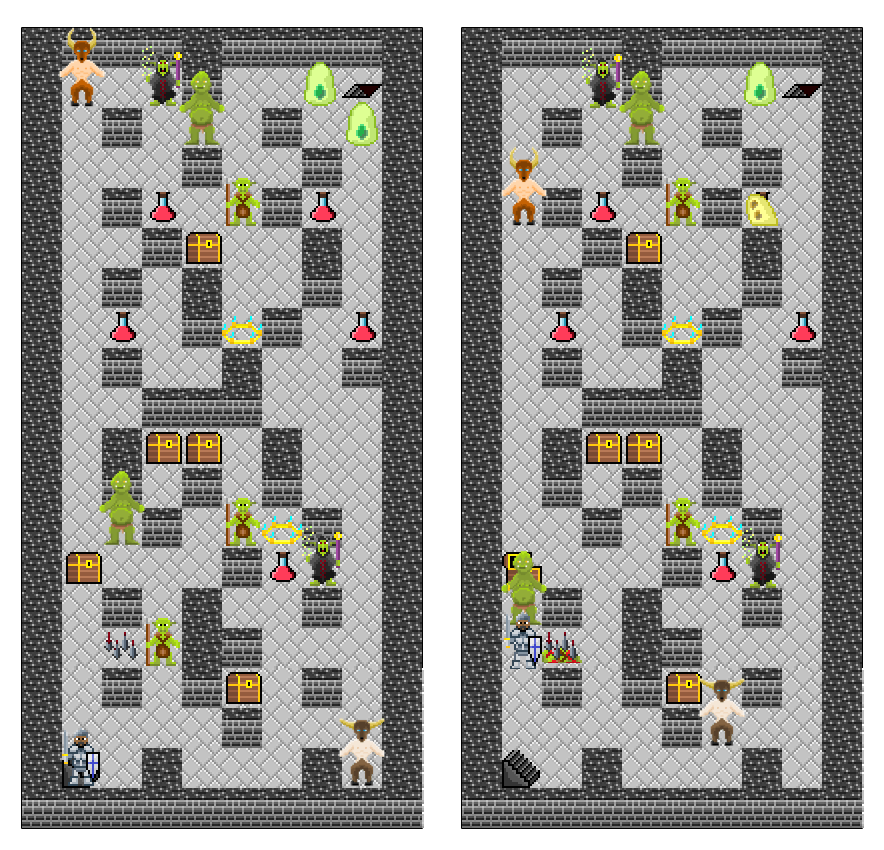
A typical MiniDungeons 2 level at start (left) and after three turns (right).
Abstract: This paper describes MiniDungeons 2 (MD2): a turn-based rogue-like game developed to support research in capturing and modeling player decision making processes through procedural personas and using such models as critics for procedural content generation. MD2 intends to provide a full-circle framework for collecting, modeling, simulating, and producing content for player decision making styles. The fully instrumented and telemetric game will soon be made available to the public to be played on smart-phones for the purpose of collecting as many play traces, representing as many different decision making styles, as possible.
in Proceedings of the 10th Conference on the Foundations of Digital Games. 2015. BibTex